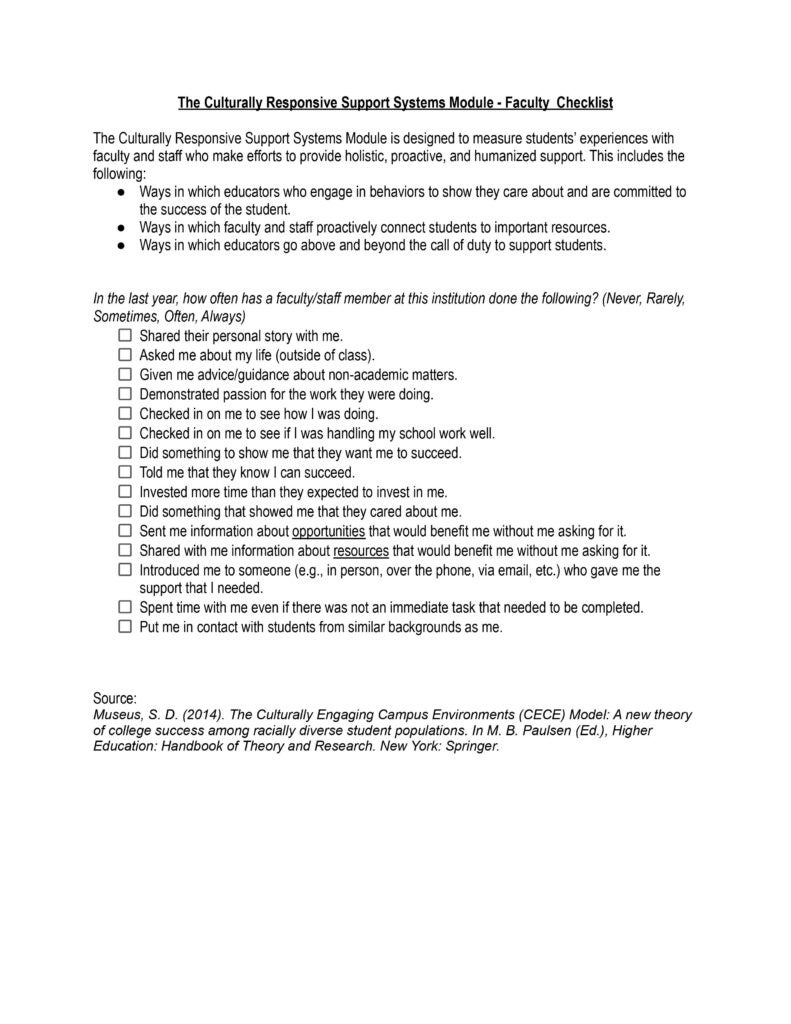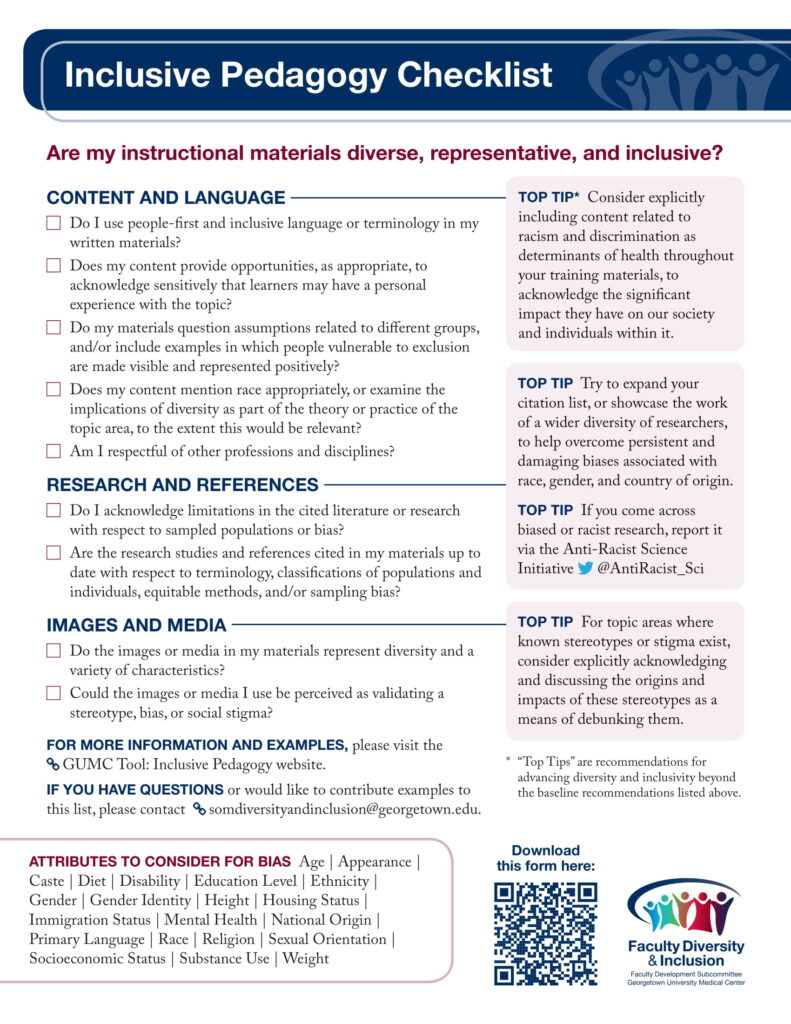Teaching and Curriculum
Inclusive Pedagogy Checklist:
Instructional materials are a key component of how students engage with new learning content. Materials that contain examples of misrepresentation or biases can cause substantial damage to students’ perceptions and attitudes to themselves, other people, their learning environment, and the subject matter. Conversely, materials that demonstrate concepts of respect, fairness, and positive power balances can not only enhance learning outcomes among students, but will contribute to reducing inequity and disparities. To this end, the inclusive pedagogy tool constitutes a simple set of guidelines for faculty, as well as staff or students assisting with teaching (or otherwise presenting their work), to use either when updating existing materials or creating new ones, to avoid biases and promote an inclusive, diverse and representative learning environment. The guidelines also include “Top Tips” at the end of each section, which are recommendations for advancing diversity, inclusivity and representation that go beyond the baseline guidance, and which we hope will be useful for thinking more broadly about ways in which instructional practices can be used to create a positive and inclusive learning environment. In addition to the version containing detailed examples, we have compiled a one-page summary “checklist” as a quick reference or printable version.
Inclusive Teaching Practices Survey
The Culturally Responsive Support Systems Module – Faculty Checklist


